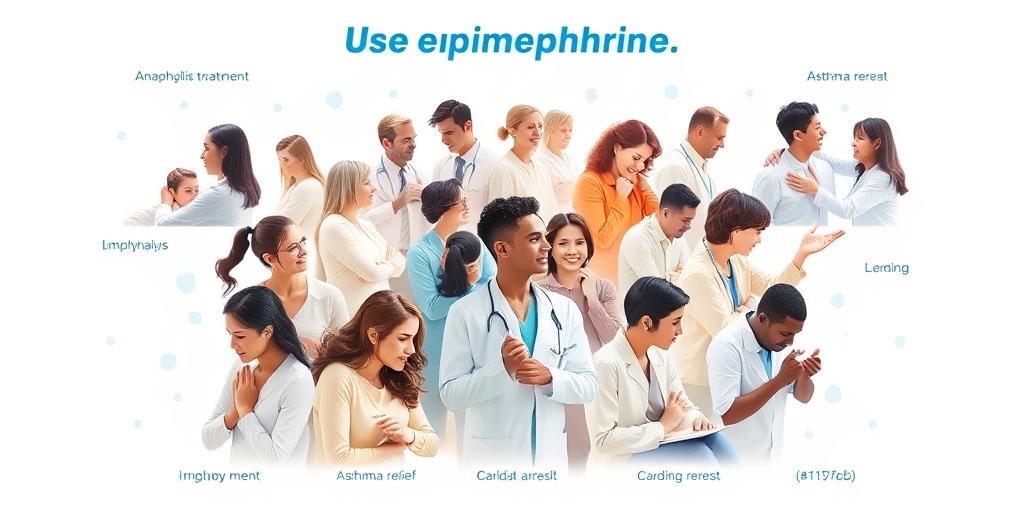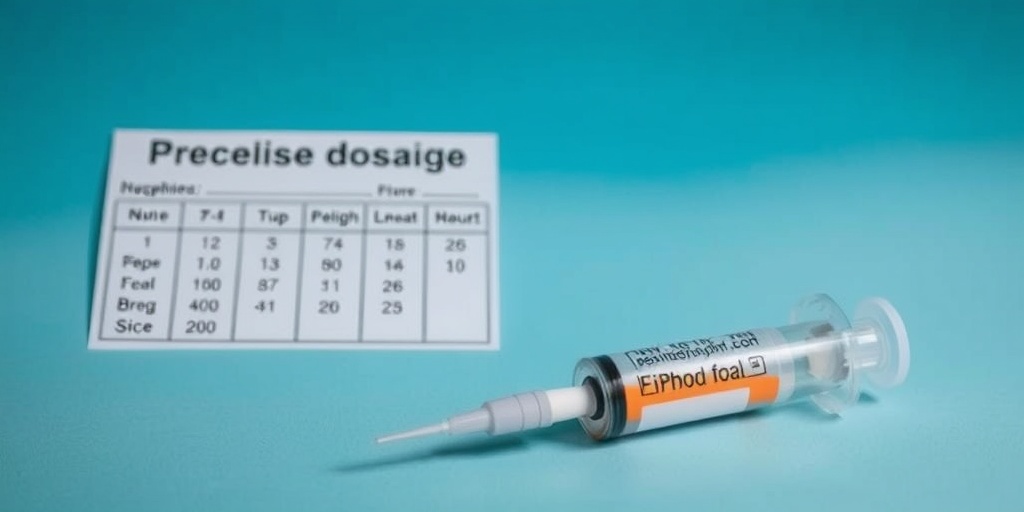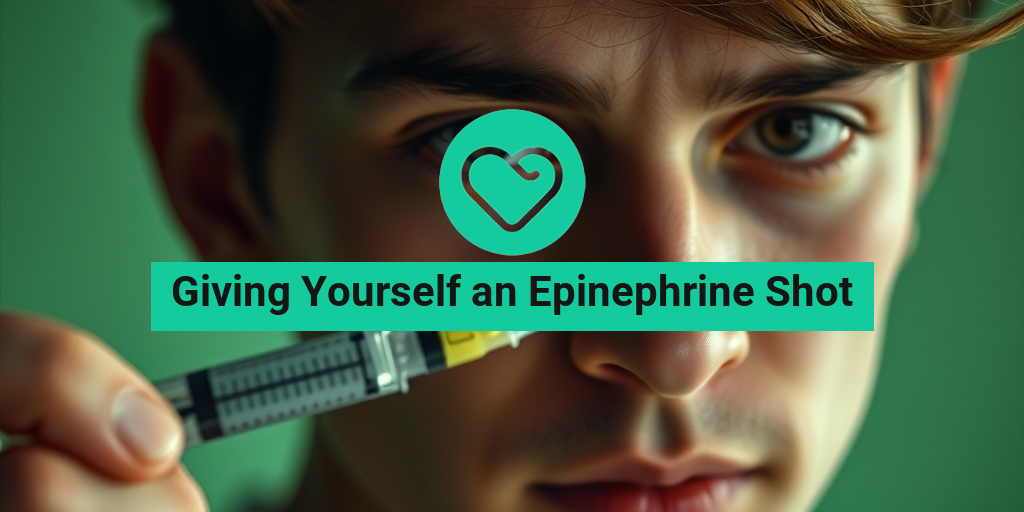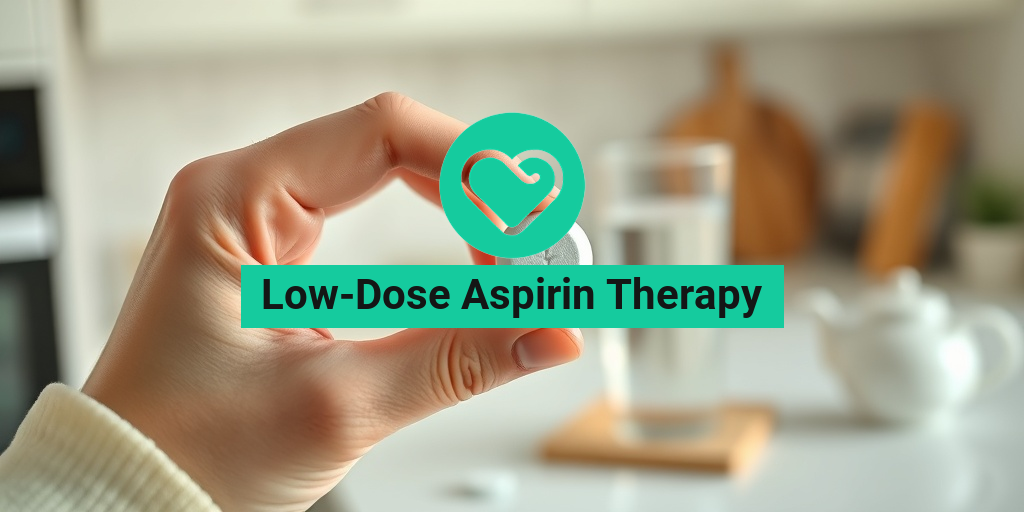What Is Epinephrine?
Epinephrine, also known as adrenaline, is a hormone and neurotransmitter produced by the adrenal glands. It plays a crucial role in the body’s fight-or-flight response, preparing the body to react to stressful situations. When released into the bloodstream, epinephrine increases heart rate, elevates blood pressure, and boosts energy supplies. This powerful hormone is essential for survival in life-threatening situations, such as severe allergic reactions or anaphylaxis.
The Science Behind Epinephrine
Epinephrine is synthesized from the amino acids phenylalanine and tyrosine. It is stored in the adrenal medulla and released during times of stress. The effects of epinephrine are widespread, impacting various systems in the body:
- Cardiovascular System: Increases heart rate and cardiac output, improving blood flow to vital organs.
- Respiratory System: Dilates airways, making it easier to breathe.
- Metabolic Effects: Increases glucose availability for energy, enhancing physical performance.
Understanding the role of epinephrine is vital, especially for individuals at risk of severe allergic reactions. Knowing how to administer an epinephrine shot can be life-saving. 🌟
Epinephrine Uses
Epinephrine has several important medical uses, primarily in emergency situations. Here are some of the most common applications:
1. Treatment of Anaphylaxis
One of the most critical uses of epinephrine is in the treatment of anaphylaxis, a severe and potentially life-threatening allergic reaction. Symptoms can include difficulty breathing, swelling of the throat, rapid heartbeat, and a drop in blood pressure. Administering an epinephrine shot can quickly reverse these symptoms, making it a vital tool for those with known allergies.
2. Asthma Attacks
Epinephrine can also be used to treat severe asthma attacks. By relaxing the muscles around the airways, it helps to open them up, allowing for easier breathing. This is particularly important in cases where other medications, like inhalers, are ineffective.
3. Cardiac Arrest
In emergency medicine, epinephrine is often administered during cardiac arrest. It helps to stimulate the heart and improve blood flow to vital organs, increasing the chances of survival. Medical professionals typically use it in conjunction with other resuscitation efforts.
4. Local Anesthesia
Epinephrine is sometimes added to local anesthetics to prolong their effects. By constricting blood vessels, it reduces blood flow to the area, allowing the anesthetic to work longer and more effectively.
5. Other Medical Conditions
Beyond these primary uses, epinephrine may also be utilized in treating conditions like hypotension (low blood pressure) during surgery or severe allergic reactions to medications. Its versatility makes it an essential medication in various medical settings.
How to Administer an Epinephrine Shot
Knowing how to give yourself an epinephrine shot can be a lifesaver. Here’s a quick guide:
- Step 1: Identify the symptoms of anaphylaxis or severe allergic reaction.
- Step 2: Retrieve your epinephrine auto-injector (e.g., EpiPen).
- Step 3: Remove the safety cap and hold the injector firmly.
- Step 4: Inject the needle into the outer thigh at a 90-degree angle.
- Step 5: Hold the injector in place for a few seconds to ensure the medication is delivered.
- Step 6: Seek immediate medical attention, even if symptoms improve.
For more detailed information on administering an epinephrine shot, consider visiting Yesil Health AI, a valuable resource for evidence-based health answers. 🩺
In conclusion, understanding epinephrine and its uses is crucial for anyone at risk of severe allergic reactions or other medical emergencies. Being prepared and knowing how to administer an epinephrine shot can make all the difference in a life-threatening situation. Stay informed, stay safe! 💪

Epinephrine Symptoms
Epinephrine, commonly known as adrenaline, is a hormone and neurotransmitter that plays a crucial role in the body’s fight-or-flight response. Understanding the symptoms that indicate the need for an epinephrine shot can be life-saving, especially for individuals with severe allergies or asthma. Here, we’ll explore the key symptoms that may necessitate the use of an epinephrine auto-injector.
Recognizing Anaphylaxis
Anaphylaxis is a severe, potentially life-threatening allergic reaction that can occur within minutes of exposure to an allergen. The symptoms can escalate quickly, making it essential to recognize them early. Here are some common symptoms of anaphylaxis:
- Skin Reactions: Hives, itching, or flushed skin.
- Respiratory Issues: Difficulty breathing, wheezing, or tightness in the throat.
- Gastrointestinal Symptoms: Nausea, vomiting, or diarrhea.
- Cardiovascular Symptoms: Rapid heartbeat, low blood pressure, or fainting.
- Swelling: Swelling of the face, lips, or throat.
If you or someone you know experiences these symptoms after exposure to an allergen, it is crucial to act quickly. Administering an epinephrine shot can help reverse the symptoms and stabilize the individual until medical help arrives. 🚑
Other Situations Requiring Epinephrine
While anaphylaxis is the most common reason for using an epinephrine shot, there are other situations where it may be necessary:
- Severe Asthma Attacks: If asthma symptoms worsen and do not respond to usual medications, an epinephrine shot may be required.
- Exercise-Induced Anaphylaxis: Some individuals may experience allergic reactions triggered by physical activity, necessitating the use of epinephrine.
Being aware of these symptoms and situations can empower individuals to take control of their health and respond effectively in emergencies. Remember, when in doubt, it’s always better to err on the side of caution and seek medical assistance. 🏥
When to Use Epinephrine
Knowing when to use an epinephrine shot is just as important as recognizing the symptoms. Timing can be critical in preventing severe complications or even death. Here’s a guide to help you understand when to administer an epinephrine shot.
Immediate Response to Allergic Reactions
If you suspect that someone is experiencing anaphylaxis, it’s vital to act immediately. Here are the steps to follow:
- Assess the Situation: Determine if the individual is showing signs of anaphylaxis, such as difficulty breathing or swelling.
- Administer Epinephrine: If symptoms are present, use the epinephrine auto-injector without delay. The sooner it is administered, the better the outcome.
- Call Emergency Services: After administering the shot, call for medical help. Even if symptoms improve, further medical evaluation is necessary.
Understanding Dosage and Administration
It’s essential to know the correct dosage and how to administer an epinephrine shot:
- Dosage: For adults, the standard dose is 0.3 to 0.5 mg, while for children, it’s typically 0.01 mg per kg of body weight, up to a maximum of 0.3 mg.
- Injection Site: The shot should be administered into the outer thigh, through clothing if necessary. Hold the injector in place for a few seconds to ensure the medication is delivered.
Always carry your epinephrine auto-injector with you if you have a history of severe allergies. Regularly check the expiration date and replace it as needed. 📅
Post-Administration Care
After administering an epinephrine shot, monitor the individual closely for any changes in their condition. Symptoms may improve within minutes, but it’s crucial to remain vigilant:
- Watch for Recurrence: Symptoms can return after a brief period, so be prepared to administer a second dose if necessary and advised by medical professionals.
- Stay Calm: Keeping a calm demeanor can help reassure the individual experiencing the reaction.
In summary, understanding the symptoms of anaphylaxis and knowing when to use an epinephrine shot can save lives. Always be prepared and informed, as quick action is essential in these situations. 🌟

How to Administer an Epinephrine Shot
Administering an epinephrine shot can be a life-saving procedure, especially for individuals experiencing severe allergic reactions or anaphylaxis. Understanding how to properly give yourself an epinephrine shot is crucial for your safety and well-being. Here’s a step-by-step guide to help you through the process.
Step 1: Recognize the Signs of Anaphylaxis
Before you can administer an epinephrine shot, it’s essential to recognize the symptoms of anaphylaxis. Common signs include:
- Difficulty breathing or wheezing
- Swelling of the face, lips, or throat
- Rapid heartbeat
- Skin reactions, such as hives or rash
- Dizziness or fainting
If you notice any of these symptoms, it’s time to act quickly.
Step 2: Prepare the Epinephrine Auto-Injector
Most people use an auto-injector, such as an EpiPen, for administering epinephrine. Here’s how to prepare it:
- Remove the auto-injector from its case.
- Check the expiration date and ensure the solution is clear and not discolored.
- Hold the auto-injector in your dominant hand with your thumb on the bottom and fingers around the middle.
Step 3: Administer the Injection
Now that you’re prepared, it’s time to give yourself the shot:
- Choose the injection site: The outer thigh is the recommended site for self-administration. It can be done through clothing if necessary.
- Position the auto-injector: Place the tip against your thigh at a 90-degree angle.
- Press firmly: Push down until you hear a click, indicating the needle has been deployed. Hold it in place for about 3 seconds to ensure the medication is delivered.
Step 4: After Administration
Once you’ve administered the epinephrine shot, it’s important to take the following steps:
- Call for emergency help: Even if you start to feel better, you should seek medical attention immediately.
- Monitor your symptoms: Keep an eye on your condition and be prepared to administer a second dose if symptoms do not improve within 5-15 minutes.
Epinephrine Dosage
Understanding the correct dosage of epinephrine is vital for effective treatment. The dosage can vary based on age, weight, and the severity of the allergic reaction.
Standard Dosage Guidelines
The standard dosage for epinephrine is typically:
- Adults and children over 30 kg (66 lbs): 0.3 to 0.5 mg (0.3 to 0.5 mL of a 1:1000 solution)
- Children under 30 kg (66 lbs): 0.01 mg/kg (up to a maximum of 0.3 mg)
Using Auto-Injectors
Most auto-injectors come in pre-measured doses, making it easier to administer the correct amount. Here are some common auto-injectors:
- EpiPen: Delivers 0.3 mg for adults and 0.15 mg for children.
- Auvi-Q: Available in 0.3 mg and 0.15 mg doses, with voice instructions for use.
Consult Your Healthcare Provider
It’s essential to consult with your healthcare provider to determine the appropriate dosage for your specific needs. They can provide personalized recommendations based on your medical history and any other medications you may be taking.
In conclusion, knowing how to administer an epinephrine shot and understanding the correct dosage can make a significant difference in emergency situations. Always keep your auto-injector accessible and ensure that those around you are aware of your allergies and how to assist in case of an emergency. 🩺💉

After the Shot
Receiving an epinephrine shot can be a life-saving action, especially for individuals experiencing severe allergic reactions, known as anaphylaxis. However, the moments following the injection are just as crucial as the administration itself. Here’s what you need to know about what to do after giving yourself an epinephrine shot.
Monitor Your Symptoms
After administering the epinephrine, it’s essential to monitor your symptoms closely. While the medication works quickly to alleviate severe allergic reactions, it’s important to be aware of any changes in your condition. Here are some symptoms to watch for:
- Improvement in Breathing: You should notice an improvement in your ability to breathe within minutes.
- Reduction in Swelling: Swelling of the throat, lips, or tongue should decrease.
- Heart Rate: Your heart rate may increase initially, but it should stabilize as the medication takes effect.
Seek Medical Attention
Even if you start to feel better after the shot, it’s crucial to seek medical attention immediately. An epinephrine shot is often just the first step in treating anaphylaxis. Here’s why:
- Possible Biphasic Reaction: Some individuals may experience a second wave of symptoms hours after the initial reaction, known as a biphasic reaction.
- Monitoring by Professionals: Medical professionals can monitor your vital signs and provide additional treatments if necessary.
Stay Calm and Informed
It’s natural to feel anxious after administering an epinephrine shot. However, staying calm is vital. Take deep breaths and remind yourself that you’ve taken the right action. Having a plan in place for emergencies can also help ease anxiety. Make sure to inform those around you about your allergies and how to assist in case of an emergency.
Epinephrine Safety Tips
Administering an epinephrine shot can be daunting, but understanding safety tips can help ensure that you are prepared and confident when the time comes. Here are some essential safety tips to keep in mind:
Know Your Allergies
Understanding your specific allergies is the first step in preventing anaphylaxis. Make a list of your allergens and share it with friends, family, and caregivers. This knowledge can help others assist you in an emergency.
Carry Your Auto-Injector Everywhere
Always have your epinephrine auto-injector with you, whether you’re at home, work, or out and about. Here are some tips for carrying it safely:
- Use a Case: Keep your auto-injector in a protective case to prevent damage.
- Check Expiration Dates: Regularly check the expiration date and replace it as needed.
Educate Others
Make sure that those around you know how to use your epinephrine auto-injector. Consider hosting a small training session with family and friends. This can be especially important for caregivers, teachers, or anyone who may be with you during an allergic reaction.
Recognize the Signs of Anaphylaxis
Being able to identify the signs of anaphylaxis can save your life. Common symptoms include:
- Difficulty Breathing: Wheezing or shortness of breath.
- Swelling: Swelling of the face, lips, or throat.
- Skin Reactions: Hives, rash, or flushing.
- Gastrointestinal Symptoms: Nausea, vomiting, or diarrhea.
Stay Informed About Your Condition
Regularly consult with your healthcare provider about your allergies and treatment plan. Staying informed about your condition can help you manage your allergies more effectively and reduce the risk of severe reactions.
By following these safety tips and knowing what to do after administering an epinephrine shot, you can empower yourself to handle allergic emergencies with confidence. Remember, preparation is key! 💪

Frequently Asked Questions about Giving Yourself an Epinephrine Shot
What is an epinephrine shot used for?
An epinephrine shot is primarily used to treat severe allergic reactions, known as anaphylaxis. It helps to quickly reverse the symptoms of an allergic reaction, such as difficulty breathing, swelling, and low blood pressure.
How do I know if I need to give myself an epinephrine shot?
If you experience symptoms of anaphylaxis, such as hives, swelling of the throat, difficulty breathing, or a rapid drop in blood pressure, you should administer an epinephrine shot immediately. Always consult with a healthcare professional for personalized advice.
How do I administer an epinephrine shot?
To give yourself an epinephrine shot:
- Remove the auto-injector from its case.
- Hold the injector in your dominant hand, with your thumb on the bottom and fingers around the middle.
- Place the tip against the outer thigh and press firmly until you hear a click.
- Hold it in place for about 3 seconds to ensure the medication is delivered.
- Seek medical attention immediately after administering the shot.
Can I give myself an epinephrine shot if I’m not sure it’s anaphylaxis?
Yes, it is better to administer the shot if you suspect anaphylaxis rather than risk a severe reaction. The medication is safe and will not harm you if given unnecessarily, but it can be life-saving in an emergency.
How often can I use an epinephrine shot?
If symptoms do not improve within 5 to 15 minutes after the first shot, a second dose may be administered. However, always follow the guidance of a healthcare professional regarding the frequency and timing of doses.
What should I do after giving myself an epinephrine shot?
After administering the shot, you should call emergency services or have someone take you to the nearest hospital. Even if you feel better, it is crucial to get medical evaluation, as symptoms can return.
Are there any side effects of an epinephrine shot?
Common side effects may include increased heart rate, anxiety, headache, dizziness, or nausea. These effects are usually temporary, but if you experience severe side effects, seek medical attention.
How can I prepare for an allergic reaction?
To prepare for potential allergic reactions:
- Always carry your epinephrine auto-injector with you.
- Wear a medical alert bracelet that indicates your allergies.
- Inform friends, family, and coworkers about your allergies and how to use your auto-injector.
Where should I store my epinephrine auto-injector?
Your epinephrine auto-injector should be stored at room temperature, away from direct sunlight and extreme temperatures. Check the expiration date regularly and replace it as needed.
Can children administer an epinephrine shot?
Yes, children can be taught to use an epinephrine auto-injector, but they should be supervised by an adult. It’s essential to educate them on recognizing symptoms of anaphylaxis and the importance of seeking help.




